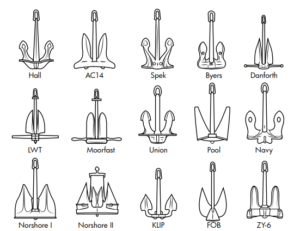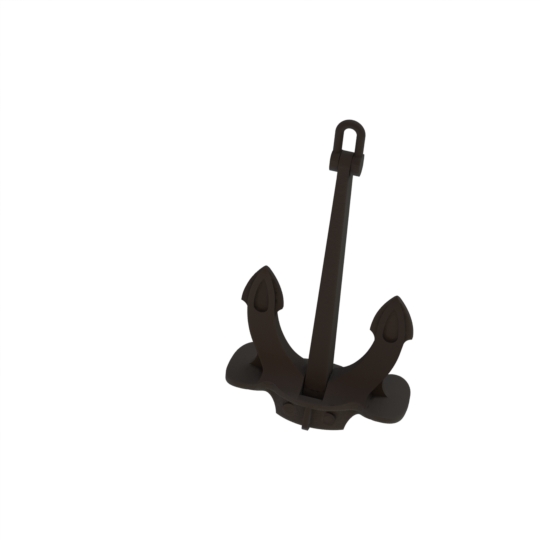Case Study | Application of Deadweight Anchors
Some anchors rely heavily on their weight to provide ground resistance or anchoring capacity. These anchors while maybe considered dumb, generally are very heavily relied upon for anchoring vessels across a multitude of soil and ground conditions. Generally, some level of holding is guaranteed, and this is fundamental to vessel moored operability and assurance especially for temporary moorings.
Often anchor holding can be re-established if the anchor slips through overloading and some level of redundancy is available for spread moored construction and pipelay activities.

Significant technical resources can be found online such as the Vryhof Anchor Manuals, UKH HSE papers and US Navy technical guidance. Anchor Marine Houston have a catalogue that provides a great overview of the types of deadweight anchors typically seen as per Page 4 with extract above https://anchormarinehouston.com/wp-content/uploads/2019/03/Section_1_Anchors.pdf .
Most importantly, if you are using a deadweight anchor, you would be wise to rely on the submerged mass of the anchor and ground chain to avoid uplift of the anchor. Uplift causes anchors to break free from the seabed and as per the clip, sandy calcareous soils offer little reliable embedment and additional drag capacity.
In this instance, the client had no choice but to chase mooring capacity with outdated mooring practices to placate the various marine parks stakeholders. ONA Marine provide quality mooring asset support services to minimise cost and maximise return on marine investments to forward thinking vessel owners/operators, government and corporations looking for a competitive advantage using asset lifecycle management to reduce maintenance costs, improve asset performance, enhance decision making, and extend useful life. Our team of asset managers support mooring lifecycle considerations including RPEQ sign off and design approval.
This advice is written by Mike Priestly of ONA Marine and is based on a review of the available information. Feel free to contact me for clarification if you believe any statements are erroneous or misunderstood. The article is not engineering advice, simply information to enable more informed decisions when it comes to identifying opportunities to do better.

